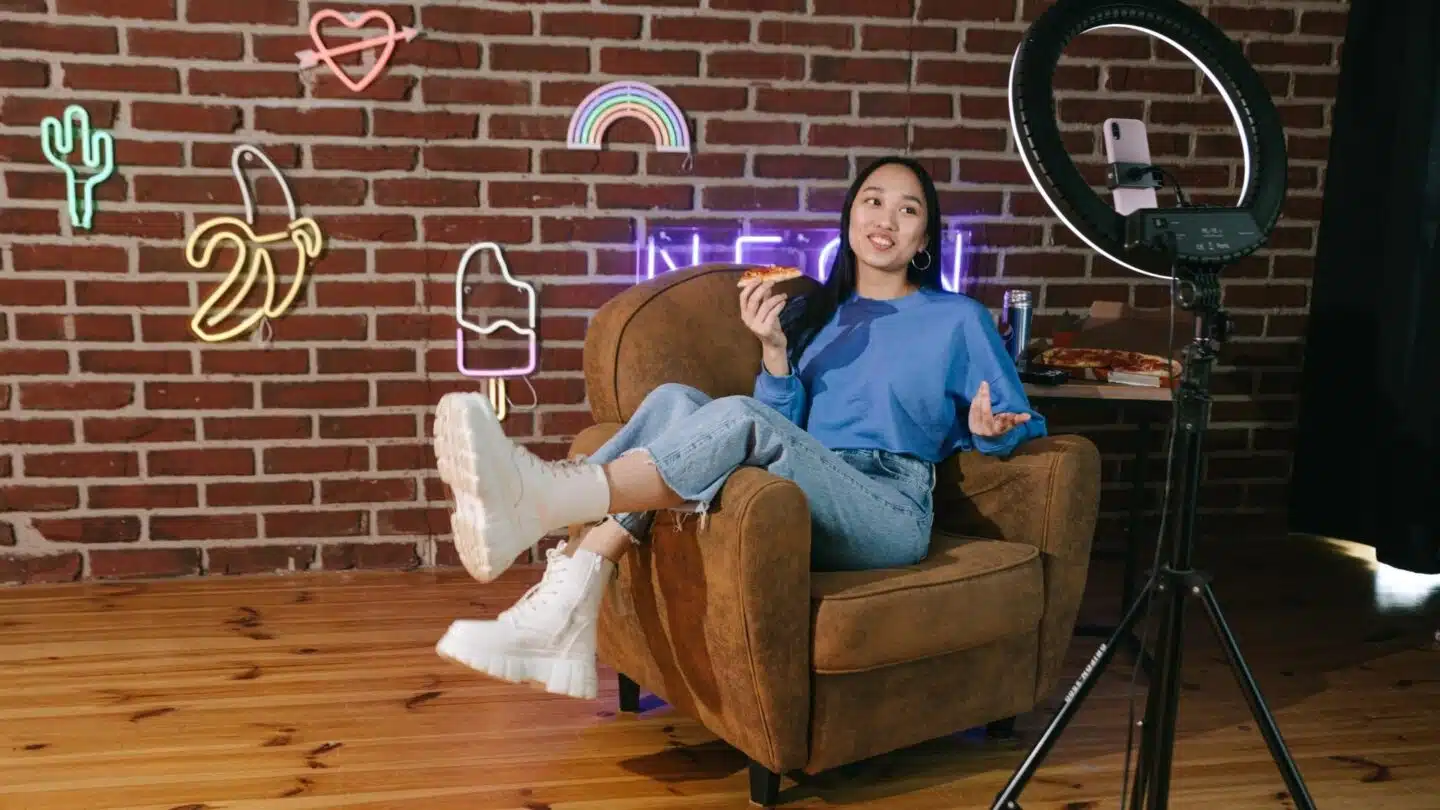Video may have killed the radio star, but it’s back to make amends with podcast presenters.
In the words of The Buggles “We can’t rewind we’ve gone too far. Pictures came and broke your heart, put all the blame on VCR.”
Ironically, ‘Video Killed The Radio Star’ was the first music video to launch on MTV. However, some 45ish years later, video is back to make amends by offering a huge opportunity to support the growth of the $18.5bn podcast industry.
The anatomy of a podcast.
There’s some debate around when the first podcast was actually created, but it’s generally accepted that 2004 is when it really started to kick off. By the end of 2005, ‘podcast’ was declared word of the year by the Oxford American Dictionary, and by 2013 Apple had surpassed 1bn podcast subscribers. Fast forward to February 2023 and there are over 5 million podcasts with upwards of 70 million episodes, with the market expected to grow from $18.5bn to $23.75bn in the next 12 months.
From true crime to comedy, history, self-improvement, music, science, art, sports, film and just about every other topic you can think of, there really is a podcast for everyone – no matter your interests or proclivities.
What’s video got to do with it?
Good question. In the main, a podcast has historically been pre-recorded audio distributed as a series across various audio-first platforms like Spotify and Stitcher: check out Serial if you’re into true crime. But in recent times, video podcasting has really started to take off, providing creators a whole host of benefits additional to simply distributing audio alone.
A video podcast does what it says on the tin, but it can be as simple or as complex as you like, and which style to choose really depends on your objectives. Most commonly it’s a simple recording of the hosts and guests as they record the podcast audio – like the Joe Rogan Experience.
But it can also offer more creative options… you’ll probably have come across The Ricky Gervais Show (unless you’ve been living under a rock for the past decade) which turned a podcast into an animated TV series in its own right.
More recently, studies have shown that almost a third (32%) of Americans prefer listening to podcasts with video, with that figure increasing to 46% among those who have listened to a podcast in the last month. And perhaps even more interestingly, one in three podcast listeners say that YouTube is their preferred podcast platform, followed by Spotify and Apple.
But wait a second… YouTube is a video platform!?
And why is YouTube the most popular platform for podcasts? You guessed it. Video podcasts.
Although audio-only is still the dominant way people consume podcasts (83% consume audio), 59% said they watch video podcasts and 42% said they both listen and watch. And while Spotify and Apple both support video podcasts (I know, I only discovered this today too!) – YouTube has always been the go-to for video content, and therefore it makes sense that it’s the go-to way to consume podcasts both aurally and visually.
“Creators who embrace video podcasts in its early stages can leverage their imagination and creativity to help sculpt this emerging format and set trends.”
– Spotify
Why bother with the hassle of video podcasts?
You may be thinking ‘We just want to record our podcast and get it out there with minimal hassle and expense.’ and we totally get that. But with marketing budgets frozen left and right, it’s worth considering ways to maximise investment and squeeze every drop of value from each piece of content you create.
For example, switching up your traditional audio-only podcast in favour of a video podcast could give you a month’s worth of content. You could rip the audio and upload to Spotify or other audio platforms, download the transcript and use it as long-form website content, upload the video to YouTube and TikTok, cut that video in to 20 bite-sized teasers or social media posts, use screenshots to promote your next episode through email marketing… and that’s just a few ideas off the top of my head!
If you need more convincing, here are a few more pros and cons (but the cons are all really pros too!) of creating video podcasts…
Pros
Wider distribution opportunities
– Filming your podcast allows you to distribute beyond audio-only channels, meaning you cater to all audiences and their different media consumption habits.
– That means more eyeballs on your content and ultimately more money in your pocket!
More collateral for promotion
– Rather than uploading audio over a static image or waveform, your content will be far more engaging for those choosing to consume through video-first platforms such as YouTube or TikTok.
– You’ll arm yourself with a huge library of content that can be repurposed across other channels, for example social media snippets, display advertising or website content.
– All of this ultimately gives you a greater opportunity to attract and retain a bigger audience across multiple marketing channels.
Accessibility
– Filming your podcast means you can cater to a more diverse audience too. For example, you can easily add translated subtitles for viewers who speak different languages, or add closed captions for those who are hearing impaired.
Cons
Production is a faff and an additional expense
– This is true, to a degree. However, if you can commit to recording a series you’ll be in a better position to negotiate cost reductions. And if you plan ahead you’ll be able to negotiate on other content formats such as social assets and snippets too, meaning you’ll drive further cost-efficiencies in the longer term.
– Depending on the objectives of your video podcast, you don’t necessarily need an Oscar winning camera set-up. Fly-on-the-wall style filming can aid authenticity, while animation (like The Ricky Gervais Show example) doesn’t require any camera set-up at all.
– Yes, investing in video production for your podcast is an additional expense, but it also offers opportunities for monetization through advertising. This can help offset any associated production costs and deliver ROI.
I don’t need the headache of complex logistics, I’m busy enough as it is!
– Nobody needs or wants that! Hiring a production company to take care of the heavy lifting means you can concentrate on the content of your podcast, while being confident you’ll get high-quality deliverables with no headaches.
Couldn’t video compromise the authenticity of the content? What if the speakers act differently when they know they’re being filmed?
– Potentially yes this could have an impact on the content, but this is minimal and avoidable. Offering your podcast in the form of a video can and will help viewers to feel more connected with your speakers and your brand, and that brings positive implications for key business pillars such as customer loyalty and brand credibility.
– Brushing up on your presentation skills is never a bad thing, so consider some refresher training if you think this could have a positive impact on your video podcast. You could even chat to your video production agency who should be able to offer specific guidance on skills such as presenting to camera.
In summary…
Video podcasting opens up so many opportunities for creators and listeners alike. It offers endless experimentation and interactivity on both sides of the microphone, and it gives you oodles more content than simply recording the audio alone. In the midst of a flailing economy, being able to do more with less is paramount. Giving your audience options when it comes to how and where they can consume your content means you’re minimising the risk of alienating any segments, while maximising the likelihood of them sharing your content across multiple platforms and increasing loyalty.
Thinking of starting your own B2B podcast? Or looking to make your existing podcast work harder? Get in touch and let’s chat about how video podcasting can take your content strategy to the next level.




